

UNLIMITED AIR RACING - RENO 2023
The Final Flag at Reno
Text & Photos by Dan Whitney, all Photos from 2023
Published 10 Feb 2024
High-Resolution Version in the Members Section
Unlimited Air Racing is at a cross-road. The 59th National Championship Air Races, held between September 13 and 17, 2023 at the Reno-Stead Airport, were the last for this venue. Back in April the airport governors announced that 2023 would be the last year for the event at the site. This wasn’t really a shock, as the years of encroachment by residential interests and commercial facilities have greatly affected the viability of the site as an air racing venue. That said, the Reno Air Racing Group, managers of the event, put everything they had into making this the best air racing event seen in years. To this end they were quite successful! Crowds were the best in many years, as was their enthusiasm and that of the contestants. While the future of air racing is unresolved, it was encouraging that representatives from six potential venues were present to observe the inter workings of the event and to develop proposals representing their communities and their capability to host an event of this nature.
While definitely the end of a storied era, the 2023 Reno Air Races were a fitting tribute to 59 years of exciting air racing at the awesome Reno-Stead venue, with large crowds and lots of airplanes and racing.
This year’s event enjoyed nearly perfect weather for racing. No impacting wildfire smoke, no high winds, and lots of enjoyable sunshine. The Unlimited field had 22 racers qualifying, up from the previous year which only had 15, and meant that a full complement of Bronze, Silver and Gold heats were scheduled, which resulted in lots of racing.
There was a lot of racing with the other classes too, including Formula One, T-6s, Sport, and Jets, along with the returning STOL Drag Racers. Biplane racing was missing this year due to issues within the Class.
Please see the table at the end of this article for a complete listing of the participating Unlimited racers, the airplane’s name, and the names of the pilots, as well as their speeds and finishing positions for qualifying and in each heat.
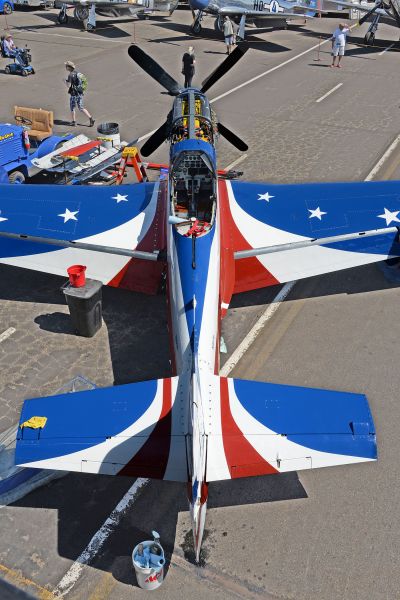 |
| #11 Miss America as seen from a vantage point in the pits. The pits are the most interesting place to be, so much to see. |
Unlimited Overview
This year’s Unlimited field included fifteen P-51 Mustangs, three Sea Furys, two R-2000 powered Yaks, along with two Allison V-1710 powered racers, a P-40E and a P-63C. Two of the P-51Ds, Bardahl Special and Miss America, are highly modified racers, as is the perennial Sanders R-4360 powered Sea Fury, Dreadnaught. Also, the Yaks should be considered “highly modified” as they posted speeds of over 360 mph, compared to a stock Yak-11 at 286 mph. Being that this was to be the last Reno Air Race, some historically interesting aircraft returned. This included P-51Ds Bardahl Special, winner of the last heat of the first Reno Air Race back in 1964 and the third place finisher in that race, Clay Lacy’s #64, raced this year by Vicky Benzing as Plum Crazy. The 1964 races uses a “point” system for scoring, borrowed from the Unlimited Hydroplane rule book, to determine the overall and final standings. Air racing now uses a simple formula for determining standings – Where you finish is your standing.
The Unlimited Races
All racers have to be on the field the Saturday before race week to allow for inspections and final preparations. Qualifying begins on Monday and extends to noon Wednesday. That afternoon the airshows and non-Unlimited racing classes begin. The first Unlimited Class races were scheduled for Thursday, followed by three races on each subsequent day, a total of twelve heats. The big disappointment during Unlimited qualifying was when the Sea Fury Dreadnought lost its engine during its second qualifying lap. It looked like the Mustangs were going to rule the week unchallenged.
With the exception of the Sunday Silver and Gold races, Unlimited heats are of six laps duration, a length of 46.992 miles. For Sunday’s finals, the Silver is seven laps, 54.90 miles, and the Unlimited Gold Final is for eight laps, 62.81 miles.
Thursday – Traditionally the fastest Gold Class Unlimited racers get the day off; this meant that Sea Furys Dreadnought, Argonaut, and #924G, along with the Yak-11 Rusin’ Thunder the Mustangs Bardahl Special and Boise Bee could stay in the pits and continue preparations for the upcoming races.
The day’s Silver Heat race was won by John Maloney in Miss Trinidad, an R-2000 powered Yak-3U, with a speed of 366.209 mph, eight mph faster than his qualifying speed and nearly 24 seconds ahead of second place Vicky Benzing in her #64 P-51D Plum Crazy.
The Bronze Heat only fielded four aircraft, three P-51s and the P-40E, who finished in second place. The heat was won by Robbie Patterson in the Mustang Wee Willy II with a speed of 331.623 mph. There was some really close racing between the P-51D Miss Marvel and the P-40, Sneak Attack. The P-40 finished at 325.652 mph and Miss Marvel at 325.149 mph.
For the first time in a number of years there were sufficient Unlimiteds so that a Medallion Heat was run on the first day. This race featured four basically stock Mustangs and the P-63 King Cobra. It was won by Mark Moodie in the Mustang Dolly/Spam Can with a speed of 319.909 mph, followed closely by John Muszala II in the Mustang Lady Jo at 318.927 mph. There was also a close race between the Palm Springs Air Museum’s entries, the P-63 Pretty Polly andP-51D Man-O-War, they finished 1/8th second apart with speeds of 300.339 mph and 300.271 mph respectively.
Friday – The Gold Class racers were finally on the course! Steven Hinton in the P-51 Bardahl Special was unchallenged and posted a winning speed of 439.981 mph compared to his qualifying speed of 469.935 mph – unchallenged as his two major competitors the Sea Fury Dreadnought, and P-51 Miss America both had problems. Dreadnought’s R-4360 broke a piston during its second qualifying lap back on Monday and Miss America had not properly qualified, and thus had to start in the day’s Bronze Heat. As it was, Steven nearly lapped the field as second place Argonaut was over a minute behind at the finish!
The Silver Heat race was made up of seven Mustangs and the P-40E. The winner was Dan Vance in his Mustang Speedball Alice at 326.647 mph, followed by four of the Mustangs, who finished within a span of 4 seconds, with speeds ranging from 322.553 mph to 320.053 mph, some very close racing! “Tail End Charlie” was the P-40E, Sneak Attack.
Only six of the seven racers for the Friday Bronze heat started, with the highly modified and “Did Not Qualify” Miss America starting in last place. This was quickly reversed as Miss America took the lead on the first lap, going on to post a winning speed of 369.245 mph and thereby becoming eligible to “bump-up” into the Saturday Silver Heat: their plan being to also win the Saturday Silver and thus be eligible for Sunday’s Gold Final. Miss America was certainly capable of posting speeds in excess of 470 mph.
Saturday – There were only five Gold Class racers in the Saturday Heat, which was won by Steven Hinton in the P-51 Bardahl Special with a speed of 405.292 mph. Even at this speed, he nearly lapped the entire field. Second and third places went to the Sea Furys Argonaut, R-2800 powered, and the Centaurus powered #924 at 366.432 and 355.933 mph respectively. The Yaks did not do well, as Rusin’ Thunder was a “Did Not Start” and Miss Trinidad was disqualified. The Mustang #64, Plum Crazy finished in fourth place with a speed of 348.899 mph.
The Silver Heat was an all “in-line” affair, seven Mustangs and the P-40. Miss America was the apparent winner, however due to pylon cuts and a 24 second penalty, along with a disqualification for going off-course, the winner of record was John Maloney in the P-51C Boise Bee with a speed of 339.863 mph. There was also some good racing further back in the pack with several racers finishing within fractions of a second of each other.
The day’s Bronze Heat was another all “in-line” event, won by Jeff Lavelle in his P-51D Sweet & Lovely at 321.103 mph. The P-51s in second and third were only a quarter of a second apart, while the fourth, the P-63, and fifth were within a half second of each other.
Sunday – The day’s Unlimited racing began with the Bronze Class final in the early afternoon. There were five Mustangs and the P-63 in the race, which was won by Jeff Lavelle in Sweet & Lovely at 321.331 mph, practically a mirror image of his previous days win. The best racing in the heat was between the P-63 Pretty Polly and Spam Can, they finished with Pretty Polly a half second ahead of the Mustang with speeds of 312.874 and 312.567 mph respectively.
This race was followed by the Silver Class Jet Final and the Gold Class T-6s. The T-6s completed their race; however disaster struck during the subsequent landing sequence when the first and second place racers collided while positioning, with fatal results.
For a number of reasons, including emergency vehicles out of place and shock and dismay among the performers and public, the remaining five races were canceled – thus ending the 59 year run of the Reno Air Races.
As a result of the canceled races the final standings were determined to be those established by the Saturday Gold and Silver heats.
The Racers
The following descriptions of each airplane are given in the order in which they qualified. See the table at the end of this article for their speeds and placement in the Unlimited Heats.
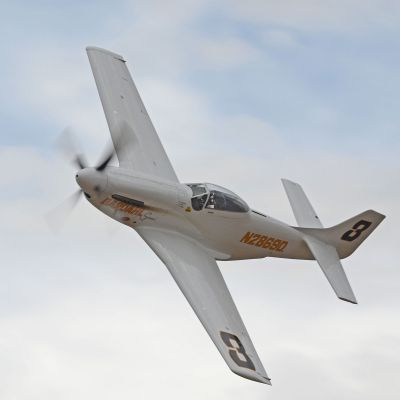 |
| #3 Bardahl Special, piloted by Steven Hinton Jr., a highly modified, Merlin powered P-51D. Seen here during Saturday’s Gold heat, where he posted a speed of 405.292 mph while winning the heat. He qualified at 469.935 mph, but with none of the other super modifieds as competitors he didn’t need to push it. As original race number #8 is currently unavailable, race #3 was selected as most similar. |
#3 Bardahl Special, a modified P-51D powered by a race prepared V-1650 Merlin V-12.
Historically, this aircraft won the last heat in the first Unlimited Reno AirRace and the last heat of the 2023/last Unlimited Reno AirRace – 59 years apart! The airplane was originally purchased war surplus by Chuck Lyford in 1964 and featured enhancements such as nitrous oxide and water-methanol injection, features borrowed from the hydroplane racers of the day, along with a “cleaned-up” airframe. So configured, pilot Bob Love qualified the racer at 395.46 mph and posted a “winning” speed of 336.82 mph, after first place Bill Greenayer was disqualified for not having landed his F8F-2 Bearcat at the 1964 race site. The Bearcat’s speed had been 351.88 mph. Lyford then went on to race the Bardahl Special with mixed results through 1967. Subsequently the airplane went through several owners and was later occasionally seen at the Reno Air Races as a stock P-51D in military paint, named Section 8, number 3 in 1979/80/81 and number 27 in 1994/95.
The airplane returned to Reno in 2022, appearing as the original Bardahl Special, done by applying white 3M Wrap Film over the entire airframe, done to protect and not alter the underlying Section 8 paint scheme while appearing as the Bardahl Special. For 2023 a number of airframe and systems enhancements were incorporated. These included removal of the “wrap” and repainting the entire aircraft, clipped wingtips from the historic racer Voodoo as well as a carbon-fiber, custom-designed inlet to the radiators that used the molds for the one on Voodoo. Similarly, the extended wing trailing edge to fuselage fillets were made using the Voodoo molds. With the help of Bardahl Special’s crew chief, L.B. Hughes, who has done similar duty on both Strega and Voodoo, internal systems also got a working over, including the use of the liquid-to-liquid oil cooler as used on the P-51H.
Airframe tweaks were also included to reduce drag, such as taking out the two-degree offset of the vertical fin that is on stock P-51Ds to counteract the gyroscopic and P-factor forces inherent in highly powered engines and propellers, and altering the thrust line of the engine mount by about one degree, along with improving the streamlining of the retracted flaps. Adjusting the tail surface angles was somewhat simplified by installation of Voodoo’s unit. The overhauled engine was the same one used in the 3 km (C-1e class) world speed record (531.53 mph) runs on Voodoo back in 2017. It retained the heavier Allison connecting rods and the supercharger impeller from the later V-1650-23 Merlin.
With all of the changes coming from Voodoo it was no surprise that the pilot was also changed; to seven time Reno Unlimited Champion Steven Hinton Jr. Steve-O didn’t disappoint: he went out during qualifying and posted a speed of 469.935 mph, by far the best of the week. Qualifying power levels were a very respectable 120 inHgA and 3,400 rpm, developing about 2,500 bhp. It was anticipated that Miss America would challenge this figure, and if necessary, the Bardahl Special team was prepared to go out and post an even higher qualifying speed.
With the cancellation of Sunday’s Unlimited Gold Final Bardahl Special, and pilot Steven Hinton, were determined to be the final Reno Unlimited Champions. Steve-O’s record setting eighth!
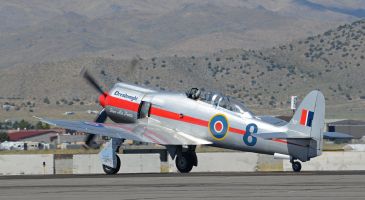 |
 |
| #8 Dreadnought, piloted by Joel Swager, taxiing out for his qualifying run on Monday. He ran two laps, posting the second fastest speed of the week on the first at 441.464 mph. Two-thirds of the way through his second lap there was a violent backfire, which caused significant damage and cracks in the otherwise smooth intake to the carburetor as seen below. Joel made an excellent deadstick landing. | |
#8 Dreadnought, a Hawker Sea Fury T.Mk.20, was re-powered back in 1983 with a Pratt & Whitney R-4360-63A, rated for takeoff at 3,800 bhp at 2,800 rpm. Again this year the Sanders family racer was piloted by Joel Swager, who had previously piloted Dreadnought to its 2018, 2021 and 2022 Gold Final wins. This big, handsome and heavy racer was built to bring dependability to Unlimited racing – by not having to push the engine to levels much beyond its original airline/military rating. Midway through the second lap the engine began running rough, then backfiring, and then was shutdown. Joel had lots of speed, which enabled him to pull up and position for an emergency landing, which he did successfully. Post race, the team believed that they had lost a master rod bearing, which causes misalignment that in turn causes a piston to hit, and break, an intake valve – the cause of the backfiring. Although Dreadnaught posted a qualifying speed it was impossible to get a replacement engine, and to consider its installation during race week. Dreadnought is fast, having set a qualifying record at 452.737 mph back in 1986 and Joel’s qualifying first lap this year was 441.464 mph, but the damaged engine kept Dreadnought out of the racing.
#114 Argonaut, a Sanders family Pratt & Whitney R-2800-CB3 powered single seat Sea Fury FB Mk.11 was again flown by Canadian Mark Watt, qualifying at 378.475 mph. Due to Mark becoming ill, piloting duties were turned over to Stephen Koewler on Friday and he finished in 2nd place. On Saturday Stephen was again the pilot and also finished in 2nd place. This resulted in his being named the overall 2nd place Unlimited racer for 2023.
#924G is another Sanders family two-seat Sea Fury T.Mk.20, powered by its original, and rare, Bristol Centaurus 18-cylinder sleeve valve engine. These 3,270 in³ engines are capable of up to 2,520 hp at 2,700 rpm, are rare and expensive, no wonder that many Sea Furys have been repowered by the readily available Wright R-3350. This year it was qualified by Dennis Sanders, but following the withdrawal of the family favorite Dreadnaught, he turned the piloting duties over to son-in-law Joel Swager. Dennis had qualified the racer at 371.158 mph. On both Friday and Saturday Joel finished in 3rd with speeds of 373.189 and 355.993 mph respectively and just behind Argonaut whose speeds were 376.898 and 366.432 mph.
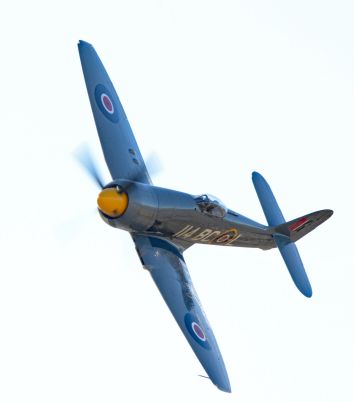 |
 |
| #114 Argonaut piloted by Steve Koewler, is a R-2800 powered Sea Fury, seen here during Friday’s Gold heat, where he ran 376.898 mph and finished second. | #924 piloted by Joel Swager, is a stock Centaurus powered Sea Fury, compete with its left turning five bladed propeller. Seen here during Saturday’s Gold heat, where he finished third and posted a speed of 355.933 mph. |
#26 Rusin’ Thunder was at Reno for the second time. The R-2000 powered Yak-11 racer promised to be quite competitive as a lot of work had been done during the past year to make it so. Owner/Pilot Scotty Crandlemire qualified the aircraft at a speed of 361.661 mph, which placed him in the Gold Class and exempted him from Thursday’s competitions. His first heat race was thus on Friday, where unfortunately he suffered a landing gear up-lock problem after takeoff and was unable to actually race. As for the Saturday race the airplane was unable to start due to a landing gear retraction issue, so nothing was gained. The airplane was quite promising with the engine developing approximately 1,550 hp at the high altitudes of Reno and with the expectation of being able to exceed 400 mph.
#27 Miss Trinidad was at Reno for the first time since 2002. The R-2000 powered Yak-3U racer, promised to be quite competitive with the expectation of being able to exceed 400 mph. Pilot John Maloney qualified the aircraft at a speed of 358.520 mph, which placed him in the Silver Class. He excitedly won the first heat race on Thursday with a speed of 366.209 mph and then “bumped” up into the Gold Class for Friday. On Friday Maloney finished 4th with Miss Trinidad at a speed of 360.800 mph. The subsequent Saturday race was a big disappointment as Miss Trinidad was disqualified for having flown above the maximum allowed altitude for the racers.
#19 Boise Bee, a stock P-51C from the Warhawk Air Museum of Nampa, Idaho was flown by John Maloney. He qualified at 358.151 mph, which placed Boise Bee in the Silver Class. As John was flying both Boise Bee and the Yak Miss Trinidad they elected to stand Boise Bee down on Thursday with the hope that John would be able to win that race and bump up into the Gold Class. Boise Bee would then be able to run in the Silver. In the event, this is exactly what happened, however the Friday Silver was a disappointment for Boise Bee as it too was disqualified for having flown too high. However, on Saturday John won the Silver Heat in Boise Bee with a speed of 339.863 mph, closely followed by the P-51H of Steven Coutches. His winning speed was down as for most of the race he was in second place and following Miss America, which was way out in front, but pylon cuts added 24 seconds to her time and coupled with high flying resulted in another disqualification, and the win going to Bosie Bee.
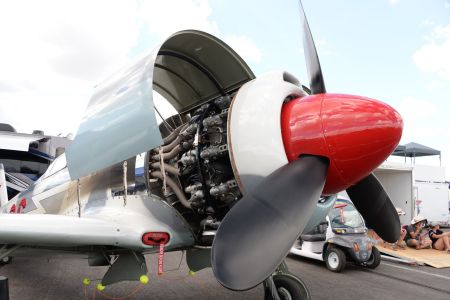 |
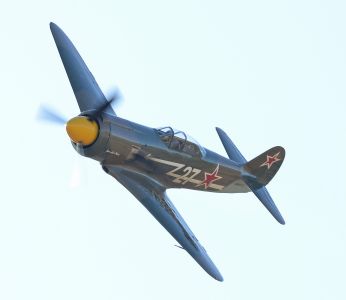 |
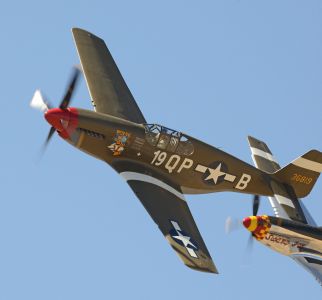 |
| #26 Rusin’ Thunder under the cowling, you can see the tight packaging done to fit the factory rated 1,450 bhp R-2000 engine. There has been a lot of work done on this airplane, too bad we didn’t get to really see it perform. Pilot Scotty Crandlemire qualified at a speed of 361.661 mph. The installation included a Pete Law ADI/water injection system that enabled pulling 56 inHgA at 2,850 rpm and making just over 1,700 bhp at 400 mph during a test flight earlier in the week. | #27 Miss Trinidad piloted by John Maloney, is a Yak-3U powered by a Pratt & Whitney R-2000 Double Wasp, nominally 1,450 hp. Seen here during Friday’s Gold heat, where he posted a speed of 360.800 mph and finished fourth. | #19 Boise Bee piloted by John Maloney, is a Merlin powered P-51C, seen here during Friday’s Silver heat, where he was disqualified for having flown too high. |
#64 Plum Crazy, a stock P-51D owned and flown by airshow veteran Vicky Benzing. She qualified the racer at 357.477 mph. In the Thursday Silver Heat she finished second at 348.277 mph, about 24 seconds behind Miss Trinidad, but ahead of three more Mustangs. For Friday’s Gold Heat both Miss Trinidad and Plum Crazy were “bumped-up” to help fill out the field, making a total of six racers. Vicky finished the Friday Gold heat in fifth with a speed of 346.824 mph. In Saturday’s Gold Heat she finished 4th with a speed of 348.899 mph, just behind Joel Swager in the Sea Fury #924 at 355.933 mph.
Plum Crazy is an airplane with an extensive Reno pedigree. A participant in the first year of racing, 1964, where it carried the race number 64 and the name Lacy Mustang. Pilot Clay Lacy qualified the airplane at a speed of 337.25 mph and won the first ever Unlimited Heat race with a speed of 341.76 mph. He finished that first race week with a third place finish in the final with a speed of 354.74 mph. The racer became a regular at Reno, often with different names reflecting its then current sponsor, but always with the number 64. In 1970 Lacy brought his now purple racer, named Miss Van Nuys, to Reno and posted the highest qualifying speed for the year, 380.12 mph. He then went on to win the 1970 Championship race, with a speed of 387.34 mph. He continued racing the airplane through 1972, where #64 qualified as the second fastest with a speed of 409.28 mph. After being mostly inactive for a number of years Clay Lacy sold the airplane to his friend Vicky Benzing. She had the airplane completely restored, and this years Reno is its first post-restoration outing.
#44 Blondie/Sparky, is another stock Packard built Merlin powered P-51D Mustang and flown by Brant Seghetti. Brant has been flying the aircraft at Reno since 1997, and qualified his racer this year at 350.482 mph. Brant finished 5th in the Thursday Silver Heat with a speed of 313.538 mph. In Friday’s Silver Heat he came in 3rd at 321.536 mph, only a second ahead of two other very competitive Mustangs. On Saturday Sparky again came in third in the Silver Heat with a speed of 327.268 mph, beating three other Mustangs and the P-40.
#31 Speedball Alice, a stock Merlin powered P-51D was qualified and raced by Dan Vance of Bend, Oregon. His qualifying speed this year was 348.048 mph, well up from his 2022 effort of 329.886 mph. In the Thursday Silver Heat he finished 4th with a speed of 323.611 mph. As a race, the Friday Silver Heat was quite competitive back in the pack; however Dan was able to win the race with a speed of 326.647 mph, six and a half seconds ahead of the pack.
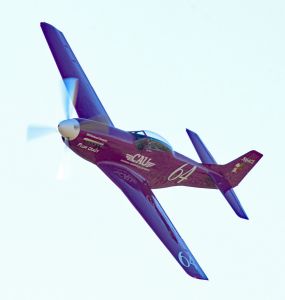 |
 |
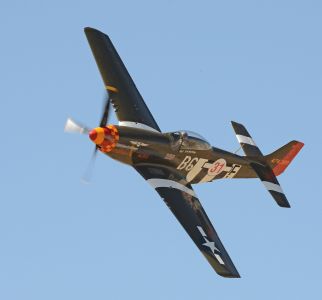 |
| #64 Plum Crazy, owned and piloted by Vicky Benzing, is a Merlin powered P-51D with a long and storied history at Reno. Seen here during Saturday’s Gold heat, where she finished in fourth at 348.899 mph. | #44 Blondie/Sparky piloted by Brant Seghetti, in his stock Merlin powered P-51D here leading Wee Willy II during Friday’s Silver heat, where he finished in 3rd with a speed of 321.563 mph. | #31 Speedball Alice piloted by Dan Vance, is a stock Merlin powered P-51D. Seen here during Friday’s Silver heat, which he won with a speed of 326.647 mph. He qualified at 348.0488 mph so there was something left for later in the week. |
#43, a late model ‘light-weight’ Mustang P-51H, without a “name,” that is owned and flown by Stephen Couches. He qualified the airplane with a speed of 334.687 mph and during the Thursday Silver Heat earned a third place finish with a speed of 332.702 mph. On Friday, again in the Silver Heat, he ran 322.553 mph and finished in second place, close behind Dan Vance in Speedball Alice. Speeds were up a bit in Saturday’s Silver Heat, with Stephen again finishing in second with 332.333 mph, this time behind the P-51C Bosie Bee and a field of in-line engine racers.
#81 Wee Willy II, a stock P-51D from the Planes of Fame museum and flown again by Robbie Patterson. This year he qualified at 329.276 mph, and raced in the Thursday Bronze Heat, which he won with a speed of 331.623 mph, enabling him to bump-up into the Silver Class for Friday’s race. There he had some close competition with Brant Seghetti in Sparky: Sparky finished in 3rd and Wee Willy II in 4th. Their speeds were 327.268 and 327.221 mph respectively.
#18 Sneak Attack, a stock P-40E from the Warhawk Air Museum and flown by Jim Thomas. Sneak Attack, an occasional participant, was first raced at Reno in 1995, qualifying at 303.452 mph. Jim qualified this year at 324.511 mph, and raced in the Thursday Bronze Heat, where he came in second with a speed of 325.652 mph. The Friday pairings placed Sneak Attack in the Silver Heat where he finished eight seconds behind a field of Mustangs, his speed being 305.421 mph. In Saturday’s Silver Heat Sneak Attack was again in last place, at 317.478 mph, but only a half second behind the Mustang Swamp Fox, whose speed was 317.763 mph.
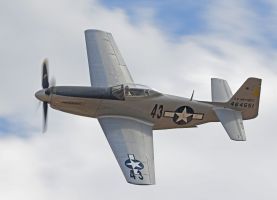 |
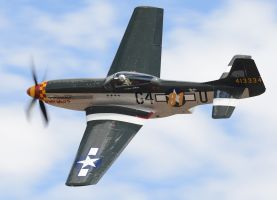 |
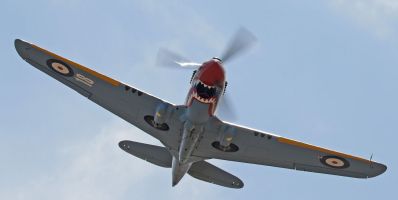 |
| #43 piloted by Steven Couches, is a stock Merlin powered 'Lightweight' P-51H, seen here during Saturday's Silver heat. He finished second in the heat with a speed of 332.333 mph, matching his qualifying speed. | #81 Wee Willy II piloted by Robbie Patterson, is a stock Merlin powered P-51D, seen here during Saturday’s Silver heat. He finished fourth in the heat with a speed of 327.221 mph. | #18 Sneak Attack, piloted by Jim Thomas, is a stock Allison powered P-40E. Seen above just after takeoff. |
#69 Miss Marvel, a stock P-51D flown by Jim Rust. This is another racer that returned to be a part of Reno’s Final Flag year. During the 1985-1989 period the airplane was known as #69 Georgia Mae and flown by John Putman. He modified the airplane and posted speeds of up to 434 mph. The airplane has since been returned to stock Mustang configuration and until recently was known/displayed as Barbara Jean. Under new ownership, Miss Marvel retains Georgia Mae’s #69 race number. Jim qualified at 323.969 mph, and raced in the Thursday Bronze Heat, where he finished third with a speed of 325.149 mph. Friday’s pairings had him in the Silver Heat, where he finished fifth at 320.053 mph in a very close race with Rob Patterson in Wee Willy II, whose 4th place finish was gained with a speed of 320.396 mph. That’s some close racing! In the Saturday Silver Heat Miss Marvel’s speed was 321.643 mph, placing Jim in fifth.
#4 Sweet and Lovely, a stock P-51D, owned and flown by well known Sport Class champion Jeff LaVelle. Jeff qualified the airplane this year at a speed of 323.375 mph, but was a DNS due to a scheduling conflict with his Sports Class racer at the time of the Thursday Bronze Heat. However in the Friday Bronze heat race Jeff finished second with a speed of 323.524 mph, well behind the heat winner Miss America who posted a speed of 369.245 mph who was on the way to bumping up to the Gold Final. For Saturday’s Bronze Heat Jeff ran 321.103 mph, but without a highly modified racer in the heat, he easily took first place, ahead of four Mustangs and the P-63 Kingcobra. Then, in the only Unlimited race completed on Sunday, the Bronze Final, he ran and won the race at 321.331 mph, practically identical to his Saturday speed.
#51 Swamp Fox, a stock P-51D, flown by R.T. Dickson, who qualified the airplane at 312.722 mph. In the Thursday Bronze Heat he ran 321.711 mph and finished last of the four racers. In the Friday Silver Heat he ran 310.346 mph and placed sixth in a field of eight racers. In the Saturday Silver Heat he again finished in sixth place, but with a speed of 317.763 mph. There was no Sunday Silver Final.
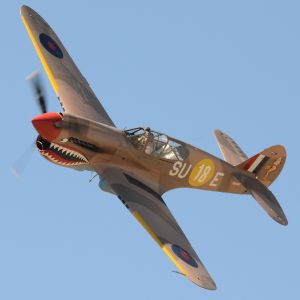 |
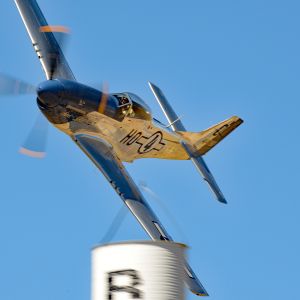 |
 |
| Jim Thomas in the P-40 #18 Sneak Attack, during Friday’s Silver heat, where Sneak Attack placed 7th, with a speed of 305.421 mph. | #69 Miss Marvel piloted by Jim Rust, is a stock Merlin powered P-51D, though in an earlier presentation she was the highly modified #69 Georgia Mae. Seen here during Friday’s Silver heat, in which Jim finished 5th with a speed of 320.053 mph. | #4 Sweet and Lovely, piloted by Jeff LaVelle, is a stock Merlin powered P-51D passing pylon 8. Seen here during Friday’s Bronze heat, in which he finished 2nd, with a speed of 323.524 mph. |
#0 Spam Can/Dolly, a stock P-51D from the Planes of Fame museum, again flown by Mark Moodie, who qualified at 311.684 mph. The airplane is Dolly on the port side and Spam Can on the starboard (Spam Can was a WWII era nickname for the P-51 as it was made of thin metal skins, akin to “spam cans.”) Mark won the Thursday Medallion Heat, his speed was 319.909 mph, though he was followed closely by John Muszala II in Lady Jo, a second and half behind. In the Friday Bronze Heat of seven racers, Mark came in third with a speed of 315.554 mph. During the Saturday Bronze Heat he again finished 3rd this time at 311.053 mph. For the Sunday Bronze Final he had a really close race with Pat Nightingale in Pretty Polly, the P-63, who took third with a speed of 312.874 mph while Mark was close behind at 312.567 mph.
#63 Pretty Polly, was the forth Bell P-63A Kingcobra built and after spending the war doing test work for the NACA was surplused. The Palm Springs Air Museum restored the aircraft as a P-63C and this year it was again flown in the races by Patrick Nightingale. Originally the P-63s had a two-stage Allison V-1710-93 engine; however the auxiliary supercharger has been removed in Pretty Pollys current configuration, which reduces available horsepower. Patrick qualified the Kingcobra at 310.760 mph. In the Thursday Medallion Heat Patrick finished in third place, with a speed of 300.339 mph, two tenths of a second ahead of stable mate P-51D Man O’War at 300.271 mph. In Friday’s Bronze Heat Pretty Polly finished fourth at 311.127 mph, then on Saturday again finished fourth at 290.986 mph. Sunday’s Bronze Final saw him step it up to 312.874 mph for third place while battling Spam Can who finished fourth at 312.567 mph.
#55 Man O’ War, a stock and very handsome Merlin powered P-51D came to Reno under the sponsorship of the Palm Springs Air Museum. The airplane was qualified and raced by Ken Gottschall, posting a qualifying speed of 310.619 mph. In the Thursday Medallion Heat Ken had a very close race with stable mate Pretty Polly, finishing at 300.271 mph, just 1/8th of a second behind the P-63. In the Friday Bronze heat he ran 297.695 mph and finished sixth. Saturdays Bronze Heat found Ken finishing in fifth position, and again just behind Pretty Polly, this time by 4/10 of a second at 290.782 mph. The Sunday Bronze Final had Ken finishing in sixth and last place, with a speed of 296.384 mph.
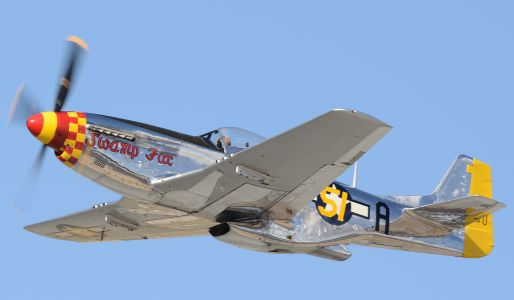 |
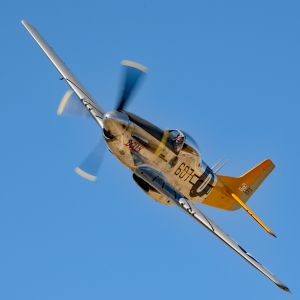 |
 |
| #51 Swamp Fox piloted by R.T. Dickson, is a stock Merlin powered P-51D. Seen here following takeoff for Monday’s qualification runs. Swamp Fox earned sixth place finishes in both the Friday and Saturday Silver heats with speeds of 310.346 and 317.763 mph respectively. | #0 Dolly/Spam Can piloted by Mark Moodie, is a stock Merlin powered P-51D from the Planes of Fame Air Museum. Seen here during Fridays Bronze heat, where he finished in 3rd place with a speed of 315.554 mph. | #63 Pretty Polly piloted by Pat Nightingale, is a single-stage Allison powered P-63C from the Palm Springs Air Museum. Seen here during Sundays Bronze heat, where he finished in 3rd place with a speed of 312.874 mph. |
#75 Lady Jo, a stock Merlin powered P-51D was qualified and raced by John Muszala II. John posted a qualifying speed of 308.850 mph. In the Thursday Medallion Heat John finished a close second to winner Spam Can with a speed of 318.927 mph. In the Friday Bronze heat he ran 306.423 mph and finished fifth. Saturdays Bronze Heat has John finishing in second place at 311.196 mph, one-quarter second ahead of Spam Can. In the Sunday Bronze Final Lady Jo again finished in second place, this time with a speed of 314.187 mph, with four racers behind.
#62 Bunny, a stock P-51D, came to Reno courtesy of the Palm Springs Air Museum. The airplane was qualified by Tom Nightingale at 296.848 mph. Competing in Thursday’s Medallion Heat Tom finished in fifth, with a speed of 297.321 mph. Bunny was a ‘Did Not Start’ on Friday, but in the Saturday Bronze Heat posted a speed of 289.645 mph, earning a sixth place finish. In the Sunday Bronze Final Bunny finished 5th at 302.148 mph, just ahead of Man O’War.
#11 Miss America, a clipped wing, highly modified, P-51D was flown by owner Dr. Brent Hisey. Following the disappointing 2022 race week the racer had been worked on extensively to be a top contender in 2023. However: a number of issues conspired to make this another tough year for Miss America. First off, the airplane was not able to get qualified within the allotted schedule, which meant that Hisey had to start at the back of the slowest heat and win his way to the Gold. This got off to a poor start when Miss America was unable to start for the Thursday Medallion Heat due to an oil radiator leak, which required sourcing a suitable replacement. Even so, everything was ready for the Friday Bronze Heat, which Miss America won with a speed of 369.245 mph, and over a minute ahead of second place Sweet & Lovely at 323.524 mph. This win allowed Hisey to move Miss America into Saturday’s Silver Heat, where another win would move him into the Sunday Gold Final. Unfortunately, while apparently winning the Saturday race Hisey was disqualified for high flying, and penalized 24 seconds for pylon cuts. With the cancellation of the Sunday Silver and Gold Finals, due to the T-6 accident, Miss America’s week was a bust. Alas, the hoped for head to head matchup of Bardahl Special and Miss America never came to pass.
 |
 |
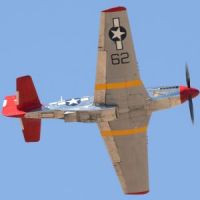 |
 |
| #55 Man O’War, piloted by Ken Gottschall, is a stock Merlin powered P-51D from the Palm Springs Air Museum. Seen here cutting inside his P-63 stable mate Pretty Polly during Saturdays Bronze heat, where he finished in 5th place, and behind Pretty Polly. | #75 Lady Jo, piloted by John Muszala II, is a stock Merlin powered P-51D. Seen here ahead of Dolly during Saturdays Bronze heat, where he finished in 2nd, at a speed of 314.187 mph, and six seconds behind Jeff LaVelle’s winning Mustang, Sweet & Lovely. | #62 Bunny, piloted by Tom Nightingale, is a stock Merlin powered P-51D from the Palm Springs Air Museum. Seen here just following takeoff for Sunday’s Bronze Final, where he finished in 5th place at 302.148 mph. One gets a good view here of the stock air and radiator scoop and doors. | #11 Miss America, piloted by Brent Hisey, this is a highly modified P-51D airframe powered by a race prepared Merlin. Seen here during Saturday’s Silver heat, where he finished in front, but was disqualified. |
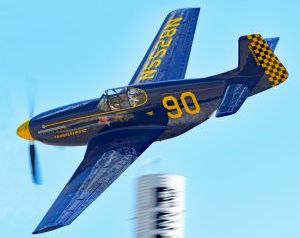 |
| #90 Thunderbird, piloted by Bernie Vasquez, for the Dakota Territory Air Museum, is a P-51C tribute restoration of the airplane once owned by famed actor Jimmy Stewart and the winner of the 1949 Bendix Transcontinental Trophy Race. There Thunderbird set a record, not yet bettered, for the 2,008 mile course of 470.136 mph. Seen here between heats on Saturday. |
And One More Unlimited Racer!
#90 Thunderbird, a historic and storied P-51C unlimited air racer from the 1940s has returned, although she did not race, she did do laps on the course as part of the airshow. The original Thunderbird was assembled from P-51C/F-6C airframe components and run in the 1948/9 Transcontinental Bendix Trophy Races, piloted by Joe DeBona and owned by actor Jimmy Stewart, and later by Jackie Cochran. DeBona won the 1949 event with a record setting, tail wind assisted, 470.136 mph for the 2,008 mile race from California to Cleveland. The airplane subsequently participated in a number of record flights following the end of the Cleveland National Air Races in 1949, and was finally sold to a Jim Cook for use in cloud seeding. So configured, the airplane’s landing gear would not properly extend while flying over Nebraska, and on June 22, 1955 Cook safely parachuted from the plane, which was destroyed in the subsequent crash.
In 1999 Warbird aficionado Warren Pietsch of the Dakota Territory Air Museum purchased the remains of what was thought to be a P-51A in Nebraska. Further investigation determined that it was instead the wreck of Thunderbird. There began a quest to collect parts necessary for a full restoration. The fuselage was one of those built by Gerry Beck and the wings came from Odegaard Wings. These parts and many more were delivered to AirCorps Aviation, Bemidji, Minnesota, for final assembly, systems installation, wiring, firewall forward installation, finishing and paint. All of this came together when Thunderbird arrived for the 2023 EAA Oshkosh AirVenture, resplendent in its 1949 paint scheme, and a tribute restoration of the original. Seeing it go around the Reno pylons was a special treat!
The Other Racing Classes
While the primary focus of this article is on the Unlimited Division racers, there is a lot more racing going on! This includes the Jets, Sports Class, T-6s, and Formula Ones as well as the STOL Drag Races. A brief description of the classes and some of the aircraft follows:
STOL Drag Racing
This exciting racing has been on the Reno program since 2019. The event takes a traditional STOL (Short TakeOff/Landing) competition to the next level in that it is spectator friendly while challenging pilots and their skills. They fly a straight 2000 foot course, down and back, with the competitors side by side, drag racing style. Winners are determined by who has the fastest round-trip time, accomplished by who best manages power and energy coupled with a precision spot landing, all while in close proximity to the competitor. This year there were 23 STOL Drag finishers, up from 16 in 2022, with Steve Henry in his #44 Yee-Haw 6, a Highlander, again in first place. His Highlander has been fitted with a turbocharged Yamaha that turns an unbelievable 10,000 rpm!
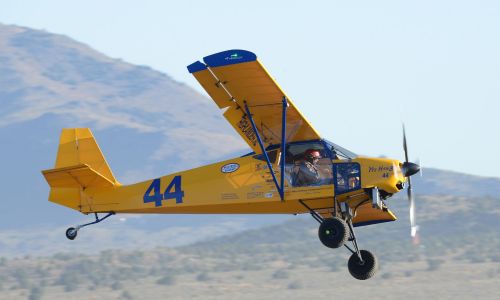 |
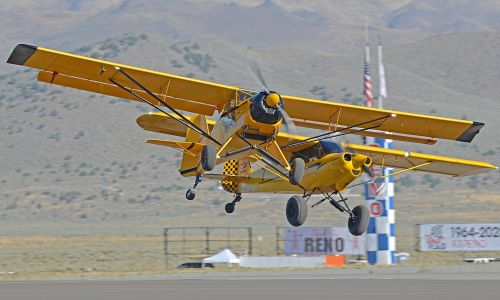 |
|
| Pilot Steve Henry in his STOL Drag #44 Yee Haw 6, a Just Aircraft Highlander, lining up for a landing. Yee Haw 6 is powered by a turbocharged Yamaha jet ski engine, turning some 10,000 rpm, and fitted with nitrous oxide, which interestingly, is sprayed into the aftercooler while the turbo spins-down when the engine is powered down on the turnaround. This significantly helps increase power while the engine spins up for the return takeoff. Steve was again the STOL Drag overall winner. One of the exciting things about STOL Drag Racing is the closeness of the aircraft and the unusual attitudes they get into. | ||
Jet Class Racing
The Jet class is the fastest of the racers, with this year’s qualifying speeds ranging from 503.351 mph down to 371.271 mph. The 10 jets in this year’s class was comprised of three L-29 Delfins, six L-39 Albatroswith one CM 170 Magister. The fastest qualifier was Rick Vandam in his L-39 American Spirit who then went on to win the Saturday Gold Heat at 496.785 mph.
Sport Class Racing
The Sports Division fielded 36 qualifying competitors, up from last year’s 29. Speeds ranged from 230.560 to 410.635 mph, representative of the wide variety of airplanes, including Van’s RV-6, -7 and -8s, Glasair II and IIIs, Thunder Mustangs, Lancairs and Team Rocket F1s. Racers may be any kit or amateur built airplane certificated by the FAA and capable of at least 200 mph. There were lots of power options including turbosuperchargers, ADI and nitrous oxide, as well as many naturally aspirated engines, with all having displacements less than the 1,000 in³ limit. This division provided some of the most exciting moments, including very close racing and a few May-Days due to various engine problems. Fortunately, everyone got back on the ground safely!
The top qualifier was again Jeff Lavelle in his turbosupercharged Glasair III, Race #39. His qualifying speed was 410.635 mph, and he won each of his Heats in the three days leading up to the Sunday Sport Gold Final, which of course was canceled.
T-6 Class Racing
There were eighteen T-6/SNJ racers this year’s competition, up from sixteen last year. Their qualifying speeds ranged from 236.504 to 179.239 mph. The T-6 Class is for “stock” airplanes. Other than airframe and engine “clean-up” not much can be done. Engines are the original 600 HP Pratt & Whitney R-1340, with standard compression ratios, but tuned to run a little faster.
Chris Rushing in #14 Baron’s Revenge, an AT-6B, was the fastest qualifier and took the Gold Final on Sunday with a speed of 234.063 mph. This made his fourth overall win in a row and was his fifth win in the last seven years of racing.
Tragically, following the Sunday Gold Final race the first and second place planes collided in the traffic pattern. Both Chris Rushing and second place finisher Nick Macy in Six-Cat perished. This accident ended the day’s events and the scheduled Gold Finals for Sports, Jets and Unlimiteds were canceled.
Biplane Class Racing
There were no Biplane races this year due to pre-existing disagreements within the Biplane Class.
Formula One Class Racing
Formula One Class racing was introduced at the Cleveland Air Races in 1947 with the intent to enable pilots to design, build and race their own planes at an affordable price. As a result, it is a very popular class of air racing with many very competitive entries. There are several other F1 races across the country and around the world each year. The ruling requirements are that they must have a minimum dry weight of 500 pounds, non-retractable landing gear, a minimum wing area of 66 square feet and a fixed-pitch wood or composite material propeller. Engines are the four-cylinder Continental C-series O-200, nominally rated at 100 hp at 2,750 rpm, however by “blue printing” and balancing the engine, installing a shorter propeller, pitched to allow 4,000 rpm, they produce more like 150 hp and achieve speeds in the range of 250-270 mph. Twenty two Formula One racers qualified this year, up from thirteen in 2022. They competed in 12 heat races, led by Josh Watson in #31 Fraed Naught, a Gilbert DG-2 that qualified at 247.412 mph. He took the Gold Final as well, with a speed of 235.645 mph.
 |
 |
 |
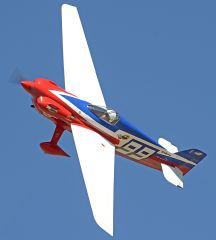 |
| Jet Class racer #55 Spirit of Freedom, an L-29 flown by Bob McCormack, inside of an L-39 on the Pylon 2 turn during Saturday’s Silver Heat. He went on to place third with a speed of 393.422 mph. | Jeff Lavelle's "SPORT" Class racer #39 during Saturday’s Gold heat race. Jeff won the race at 399.905 mph, six mph ahead of his closest of the eight competitors. | Here are two of the T-6s during Sunday's Gold Final. They finished in 3rd and 4th respectively with #66 Gunslinger in third at 223.670 mph and #88 Radial Velocity at 223.608 mph. | #99 What Airplane Honey?, a Cassutt IIIM flown by Tim Cone, qualified third at 233.641 mph, and placed fourth in the Gold Final at 223.725 mph. |
Summary
The tragic loss of two experienced and highly regarded T-6 pilots following the Sunday T-6 Gold Final was not the way anyone expected the Reno Air Races to end.
“Reno” has been a “happening” for 59 years. Something to look forward to, even if you were not able to attend and had to wait for the “Air Classics” Reno Report to find out what happened. Huge amounts of technology have been developed and/or introduced into the Reno racers over the years and hundreds of thousands fans have enjoyed the spectacle of “The World’s Fastest Motorsport,” as it was played out at the Reno-Stead airfield.
Significantly, having six possible future venues showing interest in hosting and presenting “The National Championship Air Races,” gives hope that the event is not done, but is transitioning and will come back with renewed interest and vitality!
| Race No. | Name | Aircraft Type | Pilot | Qualifying mph |
Thursday mph |
Friday mph |
Saturday mph |
Sunday mph |
|---|---|---|---|---|---|---|---|---|
| 3 | Bardahl Special | P-51D Mustang | Hinton, Steven | 469.935 | BYE | 439.981G1 | 405.292G1 | Race Canx1 |
| 8 | Dreadnought | Hawker TMK20 Sea Fury/R-4360 | Swager, Joel | 441.464 | BYE | DNS | DNS | Race Canx1 |
| 114 | Argonaut | Hawker Mk 11 Sea Fury/R-2800 | Watt, Mark/Koewler, S. | 378.475 | BYE | 376.898G2 | 366.432G2 | Race Canx1 |
| 924 | #924G | Hawker TMK20 Sea Fury/Centaurus | Sanders, D/Swager, Joel | 371.158 | BYE | 373.189G3 | 355.933G3 | Race Canx1 |
| 26 | Rusin’ Thunder | Yakovlev Yak-11/R-2000 | Crandlemire, Scotty | 361.661 | BYE | DNF | DNS | Race Canx1 |
| 27 | Miss Trinidad | Yakovlev Yak-3U/R-2000 | Maloney, John | 358.520 | 366.209S1 | 360.800G4 | DQ | Race Canx1 |
| 19 | Boise Bee | P-51C Mustang | Maloney, John | 358.151 | DNR | DQ | 339.863S1 | Race Canx1 |
| 64 | Plum Crazy | F-51D Mustang | Benzing, Vicky | 357.477 | 348.277S2 | 346.842G5 | 348.899G4 | Race Canx1 |
| 44 | Blondie/Sparky | P-51D Mustang | Seghetti, Brant | 350.482 | 313.538S5 | 321.563S3 | 327.268S3 | Race Canx1 |
| 31 | Speedball Alice | P-51D Mustang | Vance, Dan | 348.048 | 323.611S4 | 326.647S1 | 292.202G5 | Race Canx1 |
| 43 | P-51H Mustang | Couches, Steven | 334.687 | 332.702S3 | 322.553S2 | 332.333S2 | Race Canx1 | |
| 81 | Wee Willy II | F-51D Mustang | Patterson, Robbie | 329.276 | 331.623B1 | 320.396S4 | 327.221S4 | Race Canx1 |
| 18 | Sneak Attack | P-40E | Thomas, Jim | 324.511 | 325.652B2 | 305.421S7 | 317.478S7 | Race Canx1 |
| 69 | Miss Marvel | P-51D Mustang | Rust, Jim | 323.969 | 325.149B3 | 320.053S5 | 321.643S5 | Race Canx1 |
| 4 | Sweet and Lovely | P-51D Mustang | LaVelle, Jeff | 323.375 | DNS | 323.524B2 | 321.103B1 | 321.331B1 |
| 51 | Swamp Fox | P-51D Mustang | Dickson, R.T. | 312.722 | 321.711B4 | 310.346S6 | 317.763S6 | Race Canx1 |
| 0 | Dolly/Spam Can | P-51D Mustang | Moodie, Mark | 311.684 | 319.909M1 | 315.554B3 | 311.053B3 | 312.567B4 |
| 63 | Pretty Polly | P-63C Kingcobra | Nightingale, Patrick | 310.760 | 300.339M3 | 311.127B4 | 290.986B4 | 312.874B3 |
| 55 | Man O’ War | P-51D Mustang | Gottschall, Ken | 310.619 | 300.271M4 | 297.695B6 | 290.782B5 | 296.384B6 |
| 75 | Lady Jo | P-51D Mustang | Muszala, John II | 308.850 | 318.927M2 | 306.423B5 | 311.196B2 | 314.187B2 |
| 62 | Bunny | P-51D Mustang | Nightingale, Tom | 296.848 | 297.321M5 | DNS | 289.645B6 | 302.148B5 |
| 11 | Miss America | P-51D Mustang | Hisey, Brent | DNQ | DNS | 369.245B1 | DQ+24sec | Race Canx1 |
| S = Silver Heat Race, G = Gold Heat Race, B = Bronze Heat Race, M = Medallion Heat Race, DNS = Did Not Start, DNF-# = Did Not Finish-lap out, DNQ = Did Not Qualify, DNR = Did Not Race, DQ = Disqualified, BOLD = 1st Place Heat Winners, Number following Heat letter is finishing position 1 Race Canceled due to T-6 Accident Sunday afternoon |
||||||||
Send mail to
![]() with questions or comments about this web site.
with questions or comments about this web site.